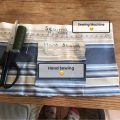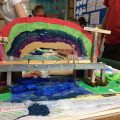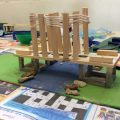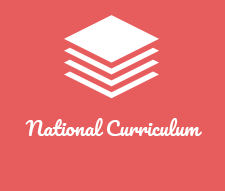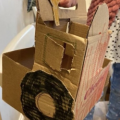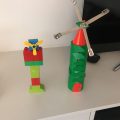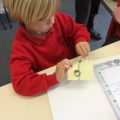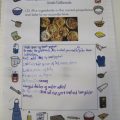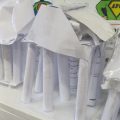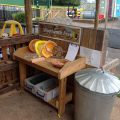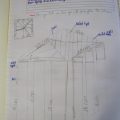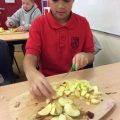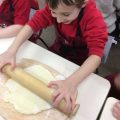“We like learning how things work and making our own creations.”- Ben
“Weaving is really creative and fun” -Madga
“It’s good fun and we can make things!” -Mika
Design and technology enables pupils to learn about two important elements – learning about the designed and made world, and how things work, and learning to design and make functional products for particular users and purposes in everyday life. By the time children leave Manland, pupils are able to apply knowledge, understanding and skills in order to design, make and evaluate a range of quality products for a wide range of users.
At Manland, we use the National Curriculum and the skills set laid out by the Chris Quigley scheme of work. Design and technology skills are taught and built upon over time, at an age appropriate level, for each year group. Our pupils also learn about nutrition and food preparation and learn how to cook.
Teachers plan a sequence of lessons to ensure that the specific expectations of ‘knowledge and understanding’ are applied when ‘developing ideas’, ‘planning’, ‘making products’ and ‘evaluating’ them. Within lessons, we nurture creativity and innovation where pupils have to think about specific purposes and users for their products. Our children enjoy using a range of materials and processes to develop their ideas.
At Manland, our pupils become confident problem solvers by making ongoing changes and improvements, both as individuals and as part of a team. They develop their knowledge in design, materials, structures, mechanisms, and electrical control. Our pupils feel confident to evaluate and identify ways in which their designs can be modified and improved.
At Manland, we promote strong cross curricular links. Our lessons provide contexts for developing maths and English skills. Design and technology further provides a motivating context for developing science, art and computing. For example, in lessons, children develop their understanding of materials and their properties, and they use ICT software to assist with their designing skills. We also take inspiration from designs throughout history and our pupils’ understanding of key developments in history is broadened when researching important individuals and their inventions.
At Manland, we value ideas that promote sustainability and enterprise. We extend our children’s design and technology learning through enrichment activities and holding STEM days. Our House Learning Days, allow our children to enjoy a range of activities reflecting the work of designers and engineers.
Our Aims – Design and Technology National Curriculum
The National Curriculum for design and technology aims to ensure that all pupils:
- Develop the creative, technical and practical expertise needed to perform everyday tasks confidently and to participate successfully in an increasingly technological world
- Build and apply a repertoire of knowledge, understanding and skills in order to design and make high-quality prototypes and products for a wide range of users
- Critique, evaluate and test their ideas and products and the work of others
- Understand and apply the principles of nutrition and learn how to cook.
Ways to Develop Design and Technology Skills at Home
- Encourage your child to safely research designers and engineers online and record their findings using appropriate software such as PowerPoint or Word.
- Follow some bake and no bake recipes following safe practices.
- Enjoy following and building construction kit models.
- Design and make a bird feeder or bug hotel.
- Undertake some sewing activities or craft sets.
- Visit and explore a range of websites, such as the ones listed below:
-
- KS1 Bitesize DT https://www.bbc.co.uk/bitesize/subjects/zb9d7ty
- KS2 Bitesize DT https://www.bbc.co.uk/bitesize/subjects/zyr9wmn
- Explore the ideas library that shows models that you might like to make https://www.exploratorium.edu/pie/ideas.html#page
- Undertake some bake and no bake recipes. https://www.foodafactoflife.org.uk/recipes/
- Online Lego building https://www.lego.com/en-gb/themes/letsbuildtogether/365-activities
- Undertake a loo roll engineering project. Build a structure out of loo rolls- you could construct model buildings, miniature playgrounds, anything goes!
- Design your world with PSB kids. https://pbskids.org/designsquad/
- Explore a variety of activities and challenges that can be used to support your child’s design and technology at home. https://www.stem.org.uk/home-learning/primary

